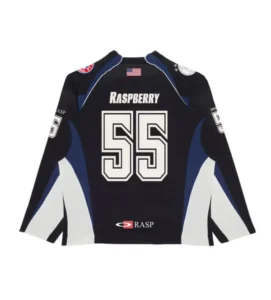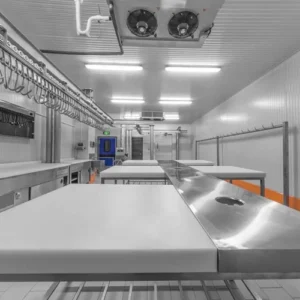When it comes to designing an office space, the conference room is one of the most important areas to consider. A well-designed conference table is not just a piece of furniture; it’s a central element that can influence the flow of communication, productivity, and even the mood of meetings. The right conference table design can provide functionality, comfort, and a professional aesthetic that aligns with your company’s values and goals. Whether you are designing a corporate office, a startup space, or a home office, choosing the right conference table is crucial.
Understanding the Significance of Conference Table Design
Conference rooms are the heart of many business operations. This is where important meetings, brainstorming sessions, and collaborations take place. The conference table design directly affects the dynamics of these interactions. A well-planned table layout encourages productive discussions, fosters collaboration, and makes clients feel welcome and comfortable.
When considering conference table design, it’s important to look at more than just size and shape. While these factors are important, they should be balanced with practical aspects such as material, functionality, and how well the table complements the overall office decor. The design should reflect the culture of your business while ensuring that everyone at the table has the space and comfort to engage effectively.
Factors to Consider in Conference Table Design
Size and Shape of the Table
The size and shape of your conference table are pivotal decisions. The size should be chosen based on the number of people who will regularly use the table. A small team may only require a compact, rectangular table, while a large organization or executive-level meetings may need a longer, oval, or even circular conference table to ensure everyone can sit comfortably.
The shape of the table affects both functionality and aesthetics. Rectangular tables are classic and often practical for meetings where participants need to view a presentation or screen. Round or oval tables encourage more equal interaction, as no one is at the “head” of the table. The choice of shape should reflect your company’s work style and the type of meetings you often have.
Material and Durability
The material of your conference table plays a big role in its aesthetic appeal and durability. Wood is a traditional choice that brings warmth and elegance to the room, while glass tops can lend a modern, sleek look. Metal bases offer an industrial vibe, often favored in contemporary office designs.
Durability is also an essential factor to consider. High-quality materials will ensure that your table lasts for years, withstanding the daily wear and tear of frequent use. Opt for materials that are easy to maintain and clean, especially if you have clients or high-profile meetings on a regular basis.
Functionality and Technology Integration
Today’s conference tables are more than just places for sitting and discussing ideas. Many of them incorporate advanced technological features to accommodate modern needs. Wireless charging stations, integrated power outlets, and HDMI ports are common additions that ensure that meetings are as seamless as possible.
In addition to technology, the table should have functionality that suits your specific business needs. Consider whether your conference table needs built-in storage for documents and supplies. Features such as cable management systems can help reduce the clutter of cords and wires, keeping the workspace tidy and organized.
Customization and Branding
A conference table offers an excellent opportunity to align your office furniture with your company’s branding. The design can incorporate your brand’s colors, logo, or unique materials to create a cohesive look that resonates with clients and employees alike. Customization allows you to personalize the table to your exact specifications, ensuring it fits seamlessly within your office’s overall design.
When choosing a design, think about your company culture. A minimalist design may reflect a modern and innovative approach, while a more traditional table design may communicate professionalism and authority. Whatever the choice, a well-thought-out conference table design can strengthen your company’s brand identity.
Comfort and Ergonomics
Comfort is a crucial consideration, especially if your meetings run for long hours. The conference table should be designed to provide enough space for people to sit comfortably and participate without feeling cramped. In addition to the table, consider the chairs. Ergonomic chairs that offer good back support are essential to ensuring that your employees and clients are comfortable throughout the meeting.
The height of the table is another important factor. It should be at a comfortable level for participants to easily take notes or type on a laptop. An ergonomic design in the table itself, as well as in the accompanying seating, promotes a positive and productive environment.
How Conference Table Design Affects Office Productivity
Conference rooms are where teams come together to solve problems, discuss strategies, and make decisions. A well-designed conference table fosters these activities by creating a conducive environment for focus and collaboration. A clutter-free, organized table promotes clear communication and helps avoid distractions during meetings.
Furthermore, the conference room design can affect team dynamics. A circular or oval table, for example, encourages equal participation, making everyone feel like their voice matters. In contrast, a traditional rectangular table may unintentionally create a hierarchy, with the leader at the head of the table and others positioned around it.
Choosing the Right Conference Table for Your Business
Choosing the right conference table design depends on various factors, such as the size of your office, the nature of your business, and the type of meetings you regularly hold. If you frequently hold large meetings, you may want a table that accommodates multiple people, perhaps with integrated tech features for presentations. If your meetings are more intimate and creative, a smaller, round table may be ideal to facilitate open discussion.
Make sure to involve key team members in the decision-making process. After all, it’s their workspace too. By considering all the elements of conference table design, from shape and size to functionality and aesthetics, you can create a space that works well for both your team and your clients.
Conclusion
In conclusion, conference table design is a critical element in the overall design of your office. It not only influences the functionality and flow of your meetings but also reflects your company’s brand and culture. A carefully chosen conference table can make a positive impact on communication, collaboration, and overall productivity. If you are looking to update your office furniture and create a conference room that promotes efficiency and professionalism, consider exploring the wide range of options available at All Office Furniture. With their expertise in office design, they can help you find a conference table that perfectly fits your needs and vision.





